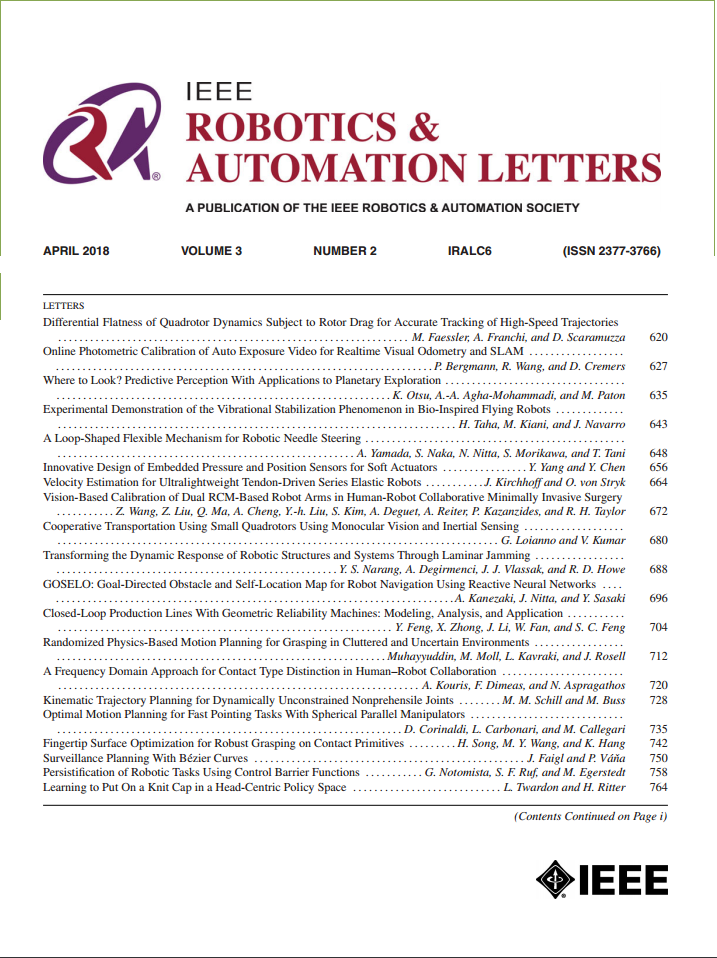4D-CS: Exploiting Cluster Prior for 4D Spatio-Temporal LiDAR Semantic Segmentation
IF 4.6
2区 计算机科学
Q2 ROBOTICS
引用次数: 0
Abstract
Semantic segmentation of LiDAR points has significant value for autonomous driving and mobile robot systems. Most approaches explore spatio-temporal information of multi-scan to identify the semantic classes and motion states for each point. However, these methods often overlook the segmentation consistency in space and time, which may result in point clouds within the same object being predicted as different categories. To handle this issue, our core idea is to generate cluster labels across multiple frames that can reflect the complete spatial structure and temporal information of objects. These labels serve as explicit guidance for our dual-branch network, 4D-CS, which integrates point-based and cluster-based branches to enable more consistent segmentation. Specifically, in the point-based branch, we leverage historical knowledge to enrich the current feature through temporal fusion on multiple views. In the cluster-based branch, we propose a new strategy to produce cluster labels of foreground objects and apply them to gather point-wise information to derive cluster features. We then merge neighboring clusters across multiple scans to restore missing features due to occlusion. Finally, in the point-cluster fusion stage, we adaptively fuse the information from the two branches to optimize segmentation results. Extensive experiments confirm the effectiveness of the proposed method, and we achieve state-of-the-art results on the multi-scan semantic and moving object segmentation on SemanticKITTI and nuScenes datasets.4D- cs:利用聚类先验进行4D时空激光雷达语义分割
激光雷达点的语义分割在自动驾驶和移动机器人系统中具有重要的应用价值。大多数方法利用多扫描的时空信息来识别每个点的语义类别和运动状态。然而,这些方法往往忽略了分割在空间和时间上的一致性,这可能导致同一目标内的点云被预测为不同的类别。为了解决这个问题,我们的核心思想是在多个帧之间生成能够反映物体完整空间结构和时间信息的聚类标签。这些标签为我们的双分支网络4D-CS提供了明确的指导,该网络集成了基于点的分支和基于集群的分支,以实现更一致的分割。具体而言,在基于点的分支中,我们利用历史知识,通过多视图的时间融合来丰富当前特征。在基于聚类的分支中,我们提出了一种新的策略来生成前景对象的聚类标签,并将其应用于逐点信息的收集,从而获得聚类特征。然后,我们合并多个扫描的相邻簇,以恢复由于遮挡而丢失的特征。最后,在点聚融合阶段,自适应融合两个分支的信息,优化分割结果。大量的实验验证了该方法的有效性,并在SemanticKITTI和nuScenes数据集上取得了多扫描语义和运动目标分割的最新结果。
本文章由计算机程序翻译,如有差异,请以英文原文为准。
求助全文
约1分钟内获得全文
求助全文
来源期刊

IEEE Robotics and Automation Letters
Computer Science-Computer Science Applications
CiteScore
9.60
自引率
15.40%
发文量
1428
期刊介绍:
The scope of this journal is to publish peer-reviewed articles that provide a timely and concise account of innovative research ideas and application results, reporting significant theoretical findings and application case studies in areas of robotics and automation.
 求助内容:
求助内容: 应助结果提醒方式:
应助结果提醒方式:


